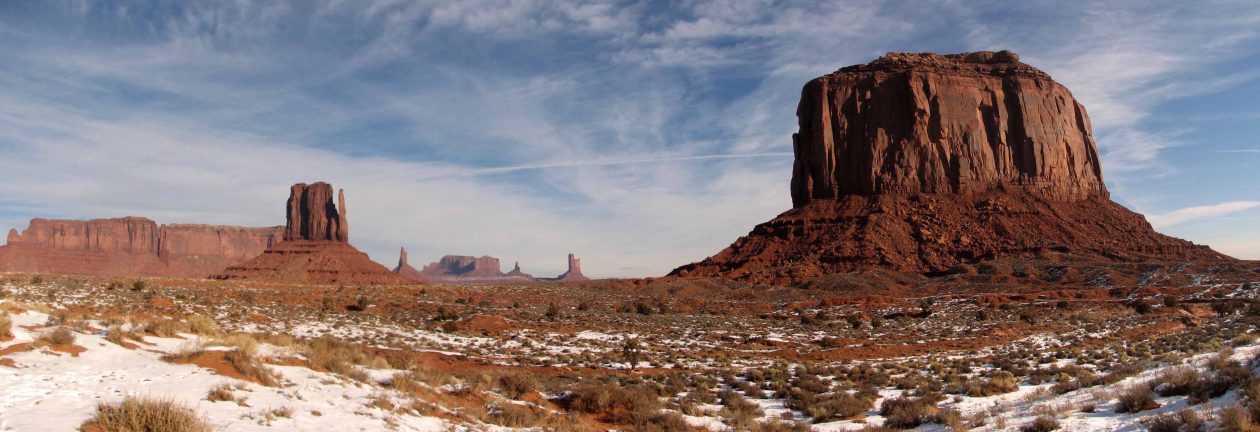Jesus Trail, Israel
Day 03 (Arbel to Capernaum)
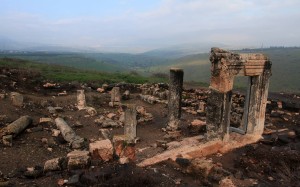
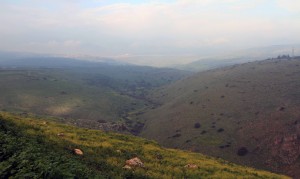
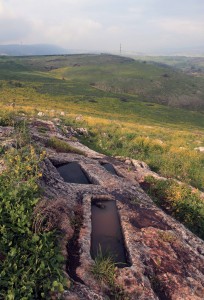
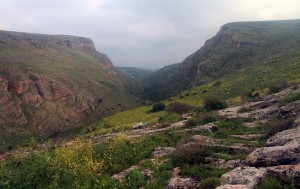
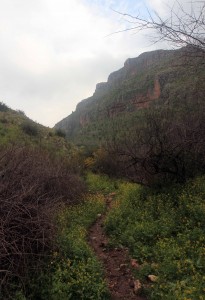
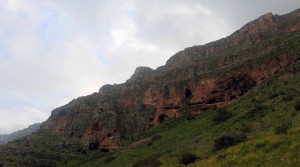
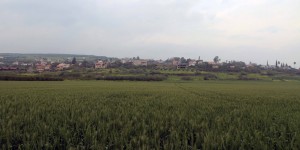
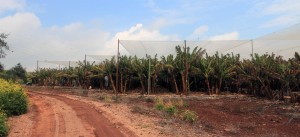
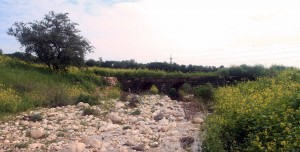
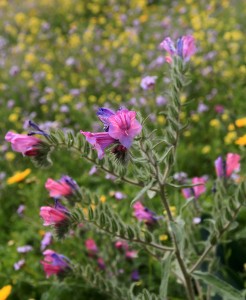
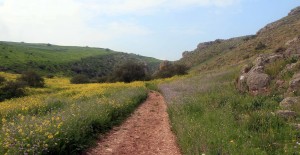
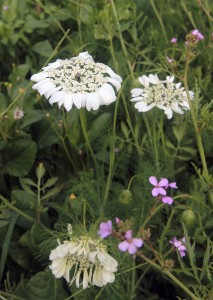
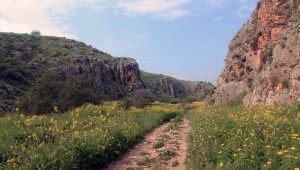
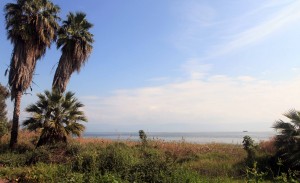
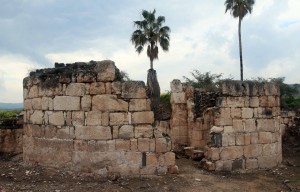
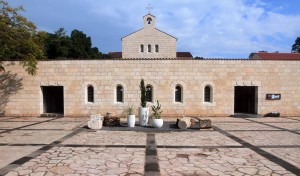
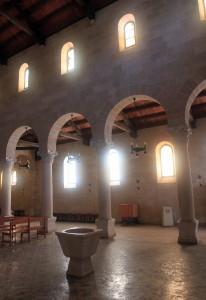
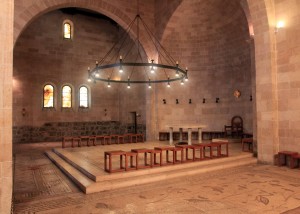
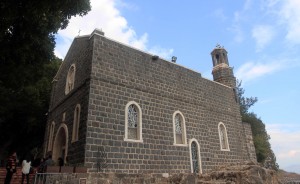
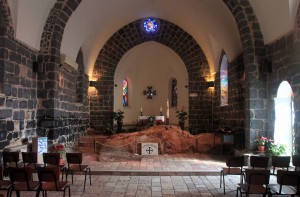
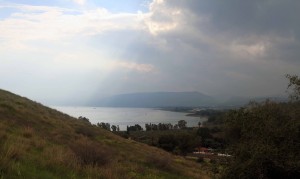
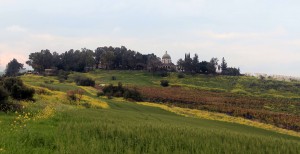
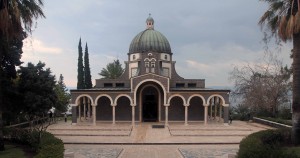
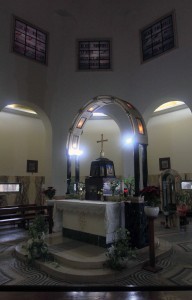
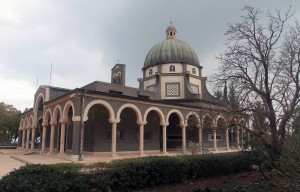
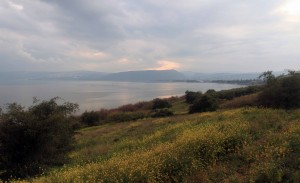
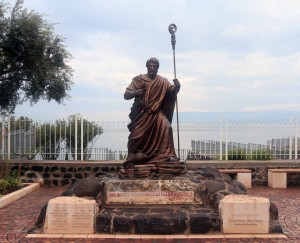
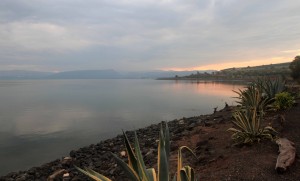
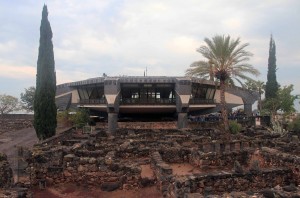
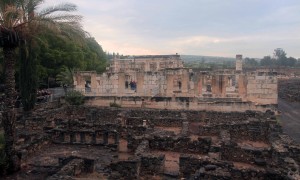
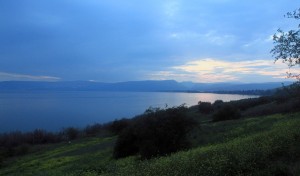
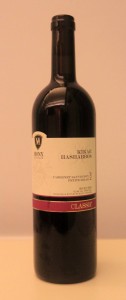
I slept in for an additional hour before waking up finally at 07:00; I then got ready, packed my bag, left a generous tip, and exited the guesthouse at 08:00. I walked on a dirt road to the ruins of a fourth-century AD synagogue (discovered in 1905 AD) and then walked up the road to Arbel National Park; at the visitor center for the park, I was told that the trails leading down the cliffs (one that has to be climbed) were closed due to the muddy and wet condition of the trail (there was too great a risk of a hiker slipping and falling to his death); so I had to turn around and follow the green-marked trail through the Arbel Valley. Once on the green-marked trail, I descended down a steep and muddy trail that passed by some exposed rock faces that had troughs cut into them (I’m assuming that they’re troughs to water the livestock, but I’m not sure if that assumption is correct). I then reached the dirt road in the valley and followed it through. As expected, the dirt road, which follows along the Arbel Stream, was very wet and in no time my shoes were covered in mud and soaked. Even though I was hiking an alternative trail, I was glad to do so because the view of the valley was great. As I passed under the Arbel Cliffs, I was able to see the caves used during the Maccabean Revolt, which lasted from 167-160 BC, between a Judean rebel group known as the Maccabees and the Seleucid Empire. After passing through the valley, I came up to the village of Wadi Hamam. I then hiked through rows of orchard trees and wheat fields before passing by the town of Migdal (the hometown of Mary Magdalene, which was known for its dried fish). I then followed a dirt road past many rows of banana trees (sheltered under plastic). I crossed the Amud Stream (a stream that had a historic stone bridge over it) and then took a wrong turn on an alternative to the main Jesus Trail, which leads to Tsefat; I hiked this trail, following the Amud Stream, through a small rocky valley that was covered in wildflowers; it was great hiking and after I soon discovered my mistake, I felt sorry to have to turn around and hike back to civilization. I then passed by more banana plantations before crossing Highway 90. The trail then led me to the shores of the Sea of Galilee. I hiked along the northwestern edge of the sea for a short distance before the trail broke away, followed the road for a while, and then came to Tabgha – the traditional site of the feeding of 5,000 with bread and fish. At Tabgha, there is nice church (the Church of the Multiplication) with ancient mosaics and under the altar is an exposed rock where Jesus Christ is said to have laid the loaves of bread and fish before he fed the five thousand. I then walked to the nearby Church of the Primacy of St. Peter (located next to the Sea of Galilee), which is built over the rock traditionally thought to be where Jesus Christ shared a meal with his disciples after the Resurrection (the fourth appearance of Jesus Christ after His Resurrection) and where He reinstated St. Peter as chief amongst His Apostles. After touring both churches, I hiked up a dirt road to the Mount of Beatitudes, the traditional site of the Sermon on the Mount, where Jesus spoke of the Beatitudes. The hike up the mount was nice, though it did start to rain some along the way; after a short distance, I reached the top and walked to the Roman Catholic Chapel that was built in 1938 AD at the summit; I walked inside and around the chapel before exiting and walking back down the Mount of Beatitudes (there are two other suggested locations – Mount Arbel and the Horns of Hattin -, but I don’t think either of those are very likely spots since they are too high and too steep to easily reach; after all, how can you give a sermon to many people when most would have difficulty getting up the mount; the Mount of Beatitudes, on the other hand, is not that tall, it has a more gentle slope, and it is very near the Sea of Galilee where many fishermen lived and worked, thus enabling Jesus Christ to have a larger audience – in all likelihood, this was where He gave the Sermon on the Mount). I then hiked along the Sea of Galilee, having great views of it during the dimming sunlight, before reaching Capernaum, the base of Jesus’ ministry and the end of the 60-kilometer long Jesus Trail. At Capernaum, there are ruins of an old Roman town, there is a modern Catholic Church built on stilts over the ruins of what is believed to be St. Peter’s home, and there is an ancient synagogue built on the foundation of a synagogue from Jesus’ time and may be one that was mentioned in the Gospels. After walking around Capernaum up until closing time (17:00), I then had to hike back the way I came, to get to a bus stop (as no buses stop at Capernaum); I then hiked past the Mount of Beatitudes, Tabgha, and back to a bus stop not far from the ruins at Horvat Minya (a palace from the eighth-century AD); during my hike back, a man who had run by me earlier came back on his route and stopped to talk to me for a while; he told me he was 26, from Michigan, and is studying to become a Catholic priest; he and others from his seminary in Chicago are visiting Israel to study and they are visiting all the places associated with Jesus Christ (in chronological order – he had been to Bethlehem, Nazareth, was now in the Capernaum area, and will later go to Jerusalem); we had a nice conversation and he asked me if I ever wanted to join the priesthood; I told him that I think most Catholic boys do, but as I grew older, I became enveloped by worldly desires; I also told him about the trip I had made and where I planned to go next; as we parted, he wished me well and told me he would pray for me. He was a very nice guy and I hope he succeeds in becoming a great priest; sadly, I don’t know if I can ever clear my mind of desires and be so good natured; it would take a lot of work before I can ever reach the peaceful and loving state of mind that man had. I then reached the bus stop, waited for a while, and then took the bus to Tiberias (an important city for rabbinical Judaism (John 6:23)). After reaching the bus station in Tiberias, I took the bus to Nazareth. I returned to Nazareth just before 20:00 and walked to the hostel I had stayed at previously and where I had left most of my gear. Once I reached the hostel, I met the owners outside, checked in, grabbed the gear I had in storage, and then returned to the dormitory room I had had previously (I had the place to myself, which was great). I then took a much needed shower, dressed in clean clothes, and then walked to a pizza restaurant nearby; I place my order and then walked to the supermarket to buy beer, wine, pistachios, and chocolate; when I returned to the pizza parlor, my pizza was ready and I got a bottle of cola (which I didn’t bother drinking); next, I returned to the hostel and ate my dinner (a pizza made with kosher/halal salami, olives, and mushrooms). During dinner, I had my wine (an Israeli produced blend of Cabernet Sauvignon and petite Syrah) that tasted of raspberries, plums, and vegetal flavors. I then consumed some of my pistachios and chocolate before going to sleep.
